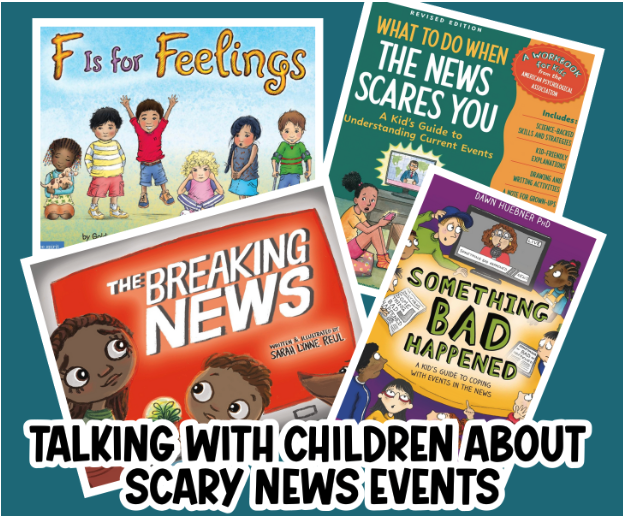Hi OWL Families,
In light of several recent events in the news, many parents and caregivers may be considering how to address such heavy topics with their children. Unfortunately, it often feels nearly impossible to shield our kids from hearing about these scary events— whether it’s through TV, social media, conversations at school, or adult conversations that may overhear at home or in the community, children and teens pick up on more than we realize! As parents and caregivers, we can’t always control what our kids hear—but we can guide how they understand and process it.
For children with low language skills, this can be especially challenging. They may not have the vocabulary to fully understand what’s happening or to express how they’re feeling. This can lead to confusion, worry, or even challenging behaviors that signal distress rather than words.
Here are some practical tips to support your child:
1. Start with what they know. Ask gentle questions like, “What have you heard?” or “What do you know about this?” For children with limited language, you may need to offer choices while being careful not to add to their distress (“Did it sound scary? Did it make you feel worried or confused?”)
2. Keep explanations simple and concrete. Use short, clear sentences. Avoid too many details and stick to what’s most important and reassuring. Always follow their lead.
3. Validate their feelings. Whether your child can tell you in words, show you with their body, or communicate in another way, let them know that it’s okay to feel scared, worried, or confused.
4. Limit media exposure. Repeated images or stories can increase anxiety, especially when a child can’t fully process what they’re seeing or hearing. Turn off background news and provide safe, quiet activities to keep their mind occupied with other topics instead.
5. Use visual and nonverbal strategies. Try to avoid putting words to how your child may be feeling and allow them to express themselves instead. These tools can help children with lower language levels understand and express feelings:
• Feelings charts or emojis – let them point to how they feel.
• Drawing or play – encourage them to show feelings through pictures, dolls, or toys.
• Social stories – create a simple illustrated story explaining the event in a clear, reassuring way. (If you need help with this, reach out to our Family Support Coordinator, Alyssa, at alyssa@owlpediatrictherapy.com)
• Visual schedules and routines – sticking to predictable routines helps kids feel safe when the world feels uncertain.
6. Use stories to support understanding. Reading picture books about feelings or safety can help children make sense of difficult topics in a gentle way.
Book Recommendations to Read Together:
• F is for Feelings by Goldie Miller (all ages)— An excellent picture book describing feelings for every letter of the alphabet in kid-friendly terms. (https://a.co/d/aBAmdV1)
• The Breaking News by Sarah Lynne Paul (4-9 years)— Offers insight to how children process scary events and shares the idea that children can always look for the “helpers” when they are feeling scared. (https://a.co/d/gg1rDbh)
• What to Do When the News Scares You: A Kid’s Guide to Understanding Current Events by Jacqueline B. Toner (7-11 years)— An interactive self-help book for kids to process feelings related to violence, extreme weather events, disease outbreaks, or larger issues such as climate change or terrorism. Guides kids utilizing cognitive-behavioral techniques commonly used by therapists. (https://a.co/d/9WjxEh5)
• Something Bad Happened: A Kid’s Guide to Coping With Events in the News by Dawn Huebner, PhD. (6-12 years)— A helpful guide to having challenging conversations and answering questions children may have while normalizing their feelings towards scary events and providing helpful coping strategies. (https://a.co/d/7ZmOVHc)
These stories and workbooks give children a safe way to explore feelings, see characters cope, and open the door to challenging conversations—no matter what their language level may be.
The most important thing when your child is feeling uncertain about scary things they hear is to reassure them that they are safe and that you are always available to listen, comfort, and help them make sense of the world in a way they can understand.



